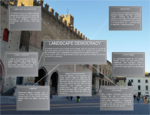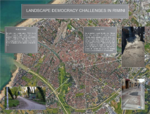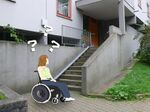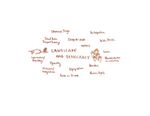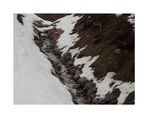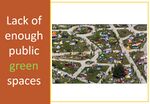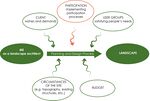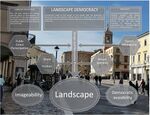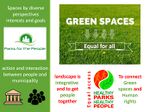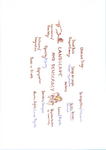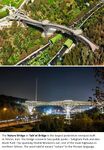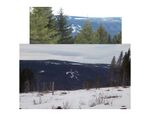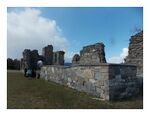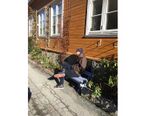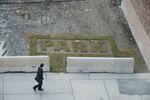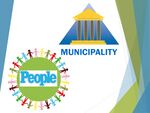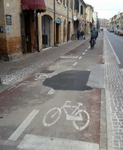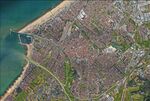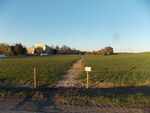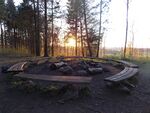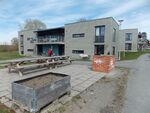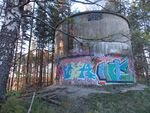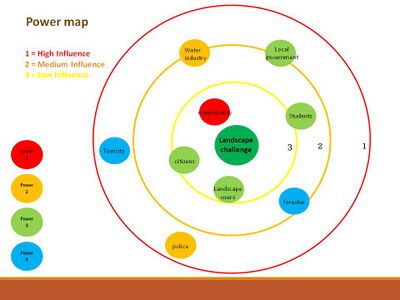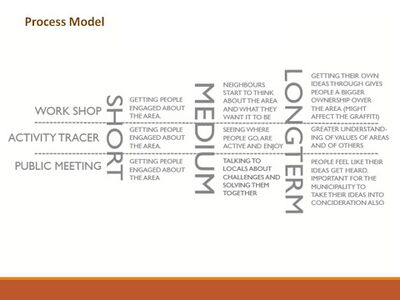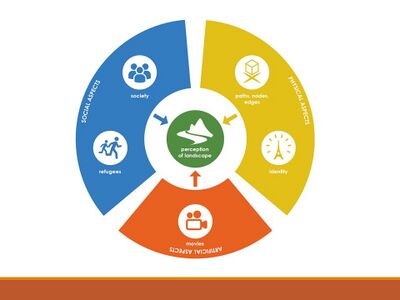LED Online Seminar 2017 - Working Group 9: Difference between revisions
| (161 intermediate revisions by 5 users not shown) | |||
| Line 10: | Line 10: | ||
== Assignment 1 - Reading and Synthesizing Core Terminology == | == Assignment 1 - Reading and Synthesizing Core Terminology == | ||
=== Step 1: Your Landscape Democracy Manifestoes === | === Step 1: Your Landscape Democracy Manifestoes === | ||
<gallery caption=" " widths="150px" heights="150px" perrow="5"> | <gallery caption=" " widths="150px" heights="150px" perrow="5"> | ||
Image:Landscape_Democracy_Manifesto_-_unit_1.png|Luca's | Image:Landscape_Democracy_Manifesto_-_unit_1.png|'''Luca's Manifesto''' | ||
Image:Landscape_Democracy_Manifesto_-_unit_2.png|Luca's | Image:Landscape_Democracy_Manifesto_-_unit_2.png|'''Luca's Democracy Challenges''' | ||
Image:Matthies_landscape_challenge.jpg|Florian's | Image:Matthies_landscape_challenge.jpg|'''Florian's Democracy Challenge''' | ||
Image:Manifesto_Malene_Eiksund.jpg|Melane's | Image:Matthies landscape relation.jpg |'''Florian's Manifesto''' | ||
Image:Manifesto_Malene_Eiksund2.jpg|Malene's | Image:Manifesto_Malene_Eiksund.jpg|'''Melane's Manifesto''' | ||
Image:LED_(Negar_Rezaei_Azghandi).JPG|Negar's | Image:Manifesto_Malene_Eiksund2.jpg|'''Malene's Democracy Challenge''' | ||
Image:Negar_Rezaei_Azghandi.jpg|Nagar's | Image:LED_(Negar_Rezaei_Azghandi).JPG|'''Negar's Manifesto''' | ||
Image:Negar_Rezaei_Azghandi.jpg|'''Nagar's Democracy Challenge''' | |||
</gallery> | </gallery> | ||
=== Step 2: Define your readings === | === Step 2: Define your readings === | ||
* | '''A: Landscape Concepts''' | ||
* Lynch, Kevin. (1960): '''The Image of the City''', Cambridge, Mass.: MIT Press (Luca) | |||
''' | '''B: Concepts of Participation''' | ||
* | *Gaventa, John: '''The Powerful, the Powerless, and the Experts''' (Florian) | ||
'''C: Community and Identity''' | '''C: Community and Identity''' | ||
* | *Welk Von Mossner, Alexa (2014): '''Cinematic Landscapes''', In: Topos, No. 88, 2014. (Negar Rezaei Azghandi) | ||
'''D: Designing''' | '''D: Designing''' | ||
* | *Salgado, Mariana, et al. (2015): '''Designing with Immigrants''' (Malene) | ||
''' | |||
=== Steps 3 and 4: Concepts Selection and definition === | === Steps 3 and 4: Concepts Selection and definition === | ||
'''Florian Matthies''' | |||
* | * '''The Knowledge Society''' [''Gaventa, John: The Powerful, the Powerless, and the Experts''] | ||
* | ** Society has shiftet from an industrial one to a "knowledge society". Nowadays the knowledge producing industries like education, reasearch, development, media and communication are the most important ones. Scientific expertise is of a higher value than experience. Thereby people are disadvantaged and more powerless by having less scientific knowledge. | ||
''' | * '''Research with The People''' [''Gaventa, John: The Powerful, the Powerless, and the Experts''] | ||
** To narrow the gap of knowledge in society, professionals need to research with the people. Thereby socially powerless groups can get into action. The researcher (the expert) starts with questions risen by the powerless groups and gives them back comprehensive information. | |||
''' | * '''Towards a Knowledge Democracy''' [''Gaventa, John: The Powerful, the Powerless, and the Experts''] | ||
** The economic production is controlled by a few people of dominant knowledge. This needs to be changed to realize a real political democracy. | |||
** | |||
* | '''Negar Rezaei Azghandi''' | ||
** | * [Welk Von Mossner, Alexa (2014): Cinematic Landscapes, In: Topos, No. 88, 2014] | ||
** Exposing the landscape crisis for the society and people through the movies, because sometimes the natural environment are interfered by the human. | |||
* | * [Welk Von Mossner, Alexa (2014): Cinematic Landscapes, In: Topos, No. 88, 2014] | ||
** .... | ** Utilization of real landscape in making a movie as a cinematic landscape. Because, Cinematic landscape is often the result of all kinds of trickery. | ||
* [Welk Von Mossner, Alexa (2014): Cinematic Landscapes, In: Topos, No. 88, 2014] | |||
** Importance of authenticity of landscape especially for making films when it plays an important role and also using the landscape as a kind of mirror of feelings. | |||
''' | '''Luca Maresi''' | ||
*...... | *'''Imageability''' [Lynch, Kevin. (1960): The Image of the City, Cambridge, Mass.: MIT Press] | ||
*.. | ** It's the "quality in a physical object wich gives it a high probaility of evoking a strong image in any given observer" that it's essential to the city's buildings in order to create a link of affinity in the two way process between the inhabitant and the city itself. | ||
* | *'''Equilibrium''' [Lynch, Kevin. (1960): The Image of the City, Cambridge, Mass.: MIT Press] | ||
** To be percevied as whole, organic and beautiful the city needs a correct interrelation between its elements, paths, edges, districts, nodes and landmarks avoioding the over-concentration of elements in different areas that tear apart the urban fabric and create inequalities. | |||
*'''Direct Analysis''' [Lynch, Kevin. (1960): The Image of the City, Cambridge, Mass.: MIT Press] | |||
** The analysis of the esxisting is essential and a good starting point of every consideration but most of all, expecially facing different realities, the contact with the people who live everyday those cities is vital to have a complete scheme of inner and esternal views. | |||
''' | '''Malene Øien Eiksund''' | ||
*. | *[Salgado, Mariana, et al. (2015): Designing with Immigrants] | ||
* | **If we consider design a question of “problem-defining” rather than “problem solving” (Kalantidou & Fry, 2014, 5), including immigrants in participatory design processes is key to transformative actions capable of producing social change. | ||
*. | *[Salgado, Mariana, et al. (2015): Designing with Immigrants] | ||
**Designing with immigrants is good because it is not language based, bud image based instead. | |||
* | |||
* | |||
=== Step 5: Reflection === | === Step 5: Reflection === | ||
According to our readings we came to the conclusion, that landscape concepts can be seen through an either physical or social perspective. Landscape is a physical appearance in the first case. So "the quality of physical objects" is very relevant to the people. This creates a link of affinity between the residents and their city for example. Especially for cities the interrelation between its elements, paths, edges, districts, nodes and landmarks is important. They need to be balanced to maintain a good urban fabric. Analyzing these existing structures is essential of every consideration. | |||
Furthermore landscape is connected to social issues as well. One social aspect is the shifting society towards a "knowledge society" where science and education are very important. Another social aspect is the integration of immigrants which is because of the currently big flow of refugees of a high significance today. Landscape can be experienced in movies as well. Often this is a cinematic landscape which is not real. Landscape can also function as a mirror of feelings in movies. | |||
Landscape concepts can be very different. To understand landscape every aspect has to be taken into account. | |||
=== Step 6: Revised manifestoes === | === Step 6: Revised manifestoes === | ||
<gallery caption=" " widths="150px" heights="150px" perrow="5"> | |||
File:Matthies landscape relation updated.jpg|'''Florian's updated Manifesto''' | |||
Image:Manifesto - Update.jpg|'''Luca's updated Manifesto''' | |||
File:Negarmanifesto.jpg |'''Negar's updated manifesto''' | |||
Image:New manifesto.png|'''Malene'supdated manifesto''' | |||
</gallery> | </gallery> | ||
== Assignment 2 - Your Landscape Symbols == | == Assignment 2 - Your Landscape Symbols == | ||
=== Negar Rezaei Azghandi === | |||
=== | |||
<gallery caption=" " widths="150px" heights="150px" perrow="5"> | <gallery caption=" " widths="150px" heights="150px" perrow="5"> | ||
File: | File:Tabiat Bridge.jpg|The Nature Bridge or Tabi'at Bridge is the largest pedestrian overpass built in Tehran, Iran. The bridge connects two public parks—Taleghani Park and Abo-Atash Park—by spanning Shahid Modarres ave, one of the main highways in northern Tehran. The word tabi’at means "nature" in the Persian language. | ||
File: | File:Koohsangi Park.jpg|Koohsangi is a name of a famous rock mountain in the city of Mashhad (Iran) and the second set of recreational, scientific park in the city. This park is a compilation of water, rocks and greenery and light. | ||
File:Vakilabad BLV.jpg|Vakil Abad, is one of the largest boulevard in the city of mashhad (Iran). the first urban train passes through it and at the end of the route, is connected two recreation and tourism areas that called Torghabeh and Shandiz. | |||
</gallery> | </gallery> | ||
=== | === Luca Maresi === | ||
<gallery caption=" " widths="150px" heights="150px" perrow="5"> | <gallery caption=" " widths="150px" heights="150px" perrow="5"> | ||
Image:Arco.jpg|The '''"Augusto's Arch" (Augusti fornix)''' is the main symbol of Rimini and of its roman origins. Ones covered by buildings was freed during the fascist regim and returned to its former glory as gate to the historical heart of the modern city. ''( | Image:Arco.jpg|The '''"Augusto's Arch" (Augusti fornix)''' is the main symbol of Rimini and of its roman origins. Ones covered by buildings was freed during the fascist regim and returned to its former glory as gate to the historical heart of the modern city. ''(N 44° 3' 24,973" E 12° 34' 15,981")'' | ||
Image:TREMARTIRI.jpg|The economical hand social heart of the city, housing the principal shops, pubs and cafes, '''Tre Martiri Square''' owns its name to a tragical episode occurred during the | Image:TREMARTIRI.jpg|The economical hand social heart of the city, housing the principal shops, pubs and cafes, '''"Tre Martiri Square" (Piazza Tre Martiri)''' owns its name to a tragical episode occurred during the World War II when three partisans were hanged by the german troops. ''(N 44° 3' 33,411" E 12° 34' 6,557")'' | ||
Image:PONTE.jpg|The '''"Tiberio's Bridge" (Tiberii pons)''' stands firmly connecting the historical centre of the city to the ancient medieval district across the Marecchia river. It's the proof of Roman's superior engeneering fullfilling its function thousands of years later. ''( | Image:PONTE.jpg|The '''"Tiberio's Bridge" (Tiberii pons)''' stands firmly connecting the historical centre of the city to the ancient medieval district across the Marecchia river. It's the proof of Roman's superior engeneering fullfilling its function thousands of years later. ''(N 44° 3' 49,12" E 12° 33' 49,871")'' | ||
</gallery> | </gallery> | ||
=== | === Florian Matthies === | ||
<gallery caption=" " widths="150px" heights="150px" perrow="5"> | <gallery caption=" " widths="150px" heights="150px" perrow="5"> | ||
Image: | Image:Matthies landscape symbol 1.JPG|Open air museum in Beuren, Germany (N48° 36.395'/E9° 25,838') Cultural landscape with old half-timbered houses and historic landuse. They practice traditional handcraft and agriculture to prevent traditions going lost. | ||
Image:Matthies landscape symbol 2.JPG|Apple orchard (N48° 36,395'/E9° 25,838')typical cultural landscape in the Swabian Alb, Germany, strong connection to native land and agricultural history, high value for recreational activities. | |||
Image:Matthies_landscape_symbol_3.JPG|Outdoor barbecue area (N48° 36,772'/E9° 22,697') important spot for meeting people and socialization in the landscape for recreational activities and eating together. Coming in contact to natural resources and elements such as gathering firewood and making fire. | |||
Image: | |||
Image: | |||
</gallery> | </gallery> | ||
=== | === Malene Eiksund=== | ||
<gallery caption=" " widths="150px" heights="150px" perrow="5"> | <gallery caption=" " widths="150px" heights="150px" perrow="5"> | ||
Image: | Image:Fakkelmannen.jpg|This man is cut out in the mountain of the city of Lillehammer in Norway. The city was the place of the winter Olympics in 1994 and the man is carrying the olympic fire. In the old Greece fire symbolised a connection with the Gods.The Olympic games and sports was a way that man could be close to the Gods. | ||
Image: | Image:Tautra Monasterium.jpg|This is the riuns of a monastary located on an island called Tautra in the middle of Norway. The ruins are well visited and symbolises the old history and traditions especially for handcrafts like beer making and soap making. These traditions are followed on by the people living at the island today. | ||
Image: | Image:Bakklandet_bench.jpg|This is a publiv bench in a part og the city of Trondheim, Norway called Bakklandet. It is a pittoresque quarter. The bench is places by the private people living in the house, but is for public use. This bench is a symbol of private people taking charge of making their city friendly and liveable. | ||
</gallery> | </gallery> | ||
== Assignment 3 - Role Play on Landscape Democracy "movers and shakers" == | == Assignment 3 - Role Play on Landscape Democracy "movers and shakers" == | ||
* | *Florian Matthies: '''Klaus Overmeyer''' (Urban Catalyst Studio) | ||
*Negar Rezaei Azghandi: '''Henry Sanoff''' (Planning Games) | |||
*Malene Øien Eiksund: '''Karl Linn''' (UC Berkeley, Community Gardens) | |||
*Luca Maresi: '''Paula Horrigan''' (Cornell University; Rust to Green project) | |||
== Assignment 4 - Your Landscape Democracy Challenge == | == Assignment 4 - Your Landscape Democracy Challenge == | ||
=== Negar Rezaei Azghandi === | |||
=== | |||
<gallery caption="Give a title to your challenge" widths="150px" heights="150px" perrow="5"> | <gallery caption="Give a title to your challenge" widths="150px" heights="150px" perrow="5"> | ||
File:Green spaces.jpg|'''Why did you select this case?''' To connect green spaces and human | |||
File:Green spaces 2.jpg |'''What is the issue/conflict?''' Shortage of enough public green spaces | |||
File:Park.jpg |'''What is the issue/conflict?''' Lack of landscape democracy | |||
File:Actores.jpg |'''Who are the actors?''' Municipality and people | |||
</gallery> | </gallery> | ||
'''Your references:''' | '''Your references:''' | ||
* | *Own research | ||
=== | === Florian Matthies === | ||
<gallery caption="Give a title to your challenge" widths="150px" heights="150px" perrow="5"> | <gallery caption="Give a title to your challenge" widths="150px" heights="150px" perrow="5"> | ||
Image: | Image:Matthies_landscape_challenge.jpg|'''Why did you select this case?''' It is important that all people have the same opportunities. | ||
Image: | Image:Matthies_landscape_challenge.jpg|'''What is the issue/conflict?''' Disabled people cannot participate in everyday life when there are barriers in the landscape | ||
Image: | Image:Matthies_landscape_challenge.jpg|'''What is the issue/conflict?''' Thereby they get excluded from society in many places. In this case: disabled people have no chance to get an apartment in this house because they cannot access it. | ||
Image: | Image:Matthies_landscape_challenge.jpg|'''Who are the actors?''' Planning authorities, planners and all disabled, injured and old people | ||
</gallery> | </gallery> | ||
'''Your references:''' | '''Your references:''' | ||
* | *Graphic reference: own research | ||
=== | === Luca Maresi === | ||
<gallery caption=" | <gallery caption="A Cycle Path for Everyone" widths="150px" heights="150px" perrow="5"> | ||
Image: | Image:Path 2.png|''' Why did you select this case? ''' Cause Rimini's cycle path is wiewed and published as a core element of the city. | ||
Image: | Image:Path 1.jpg|''' What is the issue/conflict? ''' The paths are in various state across the city from completely ruined to sections too small and inpassable so bicycle riders prefer the roadway. | ||
Image: | Image:Rimini_Map.jpg|''' What is the issue/conflict? ''' Contrary to what's published most of the paths are not connected or absent in certain areas of the city making difficult for many inhabitants to use the bike. | ||
Image: | Image:Rimini_Logo.gif|''' Who are the actors? ''' Rimini's municipality and citiziens. | ||
</gallery> | </gallery> | ||
'''Your references:''' | '''Your references:''' | ||
* | *Graphic reference: own research and pictures. | ||
=== | === Malene Øien Eiksund === | ||
<gallery caption=" | <gallery caption="Who uses, ownes and who restores? I chose four examples from my neighbourhood to examplify this democratic challenge of responsibility" widths="150px" heights="150px" perrow="5"> | ||
Walkingpath.jpg|''(1) The first one is a path that I used to walk on my day to school, but now the owners of the fiels doesnt want people to walk there anymore so they put up a fence.'' '''Why did you select these cases?''' I selected these cases because they are conflicts in my everyday life. | |||
Fireplace.jpg| ''(2) The second picture is of a fire place in the woods close to my school. It is used by a lor of people and is shared. But who fixes and restores the place. Is it the people who own the woods, the municipality or is the people who uses it?'' '''What are the issues/conflicts?''' The issue in all of these cases is who uses them, who ownes them and who restores them. | |||
Commonarea.JPG| ''(3) The third picture is of a common area between the student housing where I live. There is a barbeque there and some chairs used by the students living there. But whos responisibility is it to restore and take care of it? Is it the students or the student housing commite?'' | |||
Tagging.JPG|''(4) This fourth picture is of a wather tower in the forest close to my house. The tower is the property of the municipality, but locals have used graffiti on the walls illegally. Who is here in charge of restoring it, is it the municipality or the people who painted it illegally? Or is the municiplaity okay with the graffiti?'' '''Who are the actors?''' The actors in these cases are the owners of the properties, the ones who are using the area or renting, and the municipality. | |||
</gallery> | </gallery> | ||
'''Your references:''' | '''Your references:''' | ||
* | *Pictures by me | ||
== Assignment 5 - Your Democratic Change Process == | == Assignment 5 - Your Democratic Change Process == | ||
=== Your Democratic Change Process === | === Your Democratic Change Process === | ||
<gallery caption=" | <gallery caption="Fire place & Water tank tower " widths="600px" heights="300px" perrow="1"> | ||
File:Assignment5 Group9 powermap.JPG| | |||
File:Assignment5 Group9 changeprocess.JPG| | |||
File:LED Assignment 5.jpg| | |||
</gallery> | </gallery> | ||
=== Reflection === | === Reflection === | ||
The theoretical frame of the seminar gave us not only the basics and methods of how to accomplish the challenge but most of all it guided the way of look at this kind of problems. Actually the democratic method can be seen not only in the prevision of including the population in this future project but also in the way we discussed in the group sharing ideas and creating common points to give everyone a voice, not with a singleminded leader but with occasional spoesperson. After this we looked at the task in a different way recognising the “Imageability” of the landscape chosen, the way it is percevied by the people living by it, and so working with the intention not necessarely to change the nature of the land but most of all the way it is perceived and utilized in order make it a common ground itself. | |||
=== Your references === | === Your references === | ||
* | *Graphic reference: own research | ||
* | *Lectures | ||
---- | ---- | ||
[[Category:Landscape Democracy Working Group 2017]] | [[Category:Landscape Democracy Working Group 2017]] | ||
Latest revision as of 20:36, 15 June 2017
--> Back to working group overview
Dear working group members. This is your group page and you will be completing the template gradually as we move through the seminar. Good luck and enjoy your collaboration!
Assignment 1 - Reading and Synthesizing Core Terminology
Step 1: Your Landscape Democracy Manifestoes
Step 2: Define your readings
A: Landscape Concepts
- Lynch, Kevin. (1960): The Image of the City, Cambridge, Mass.: MIT Press (Luca)
B: Concepts of Participation
- Gaventa, John: The Powerful, the Powerless, and the Experts (Florian)
C: Community and Identity
- Welk Von Mossner, Alexa (2014): Cinematic Landscapes, In: Topos, No. 88, 2014. (Negar Rezaei Azghandi)
D: Designing
- Salgado, Mariana, et al. (2015): Designing with Immigrants (Malene)
Steps 3 and 4: Concepts Selection and definition
Florian Matthies
- The Knowledge Society [Gaventa, John: The Powerful, the Powerless, and the Experts]
- Society has shiftet from an industrial one to a "knowledge society". Nowadays the knowledge producing industries like education, reasearch, development, media and communication are the most important ones. Scientific expertise is of a higher value than experience. Thereby people are disadvantaged and more powerless by having less scientific knowledge.
- Research with The People [Gaventa, John: The Powerful, the Powerless, and the Experts]
- To narrow the gap of knowledge in society, professionals need to research with the people. Thereby socially powerless groups can get into action. The researcher (the expert) starts with questions risen by the powerless groups and gives them back comprehensive information.
- Towards a Knowledge Democracy [Gaventa, John: The Powerful, the Powerless, and the Experts]
- The economic production is controlled by a few people of dominant knowledge. This needs to be changed to realize a real political democracy.
Negar Rezaei Azghandi
- [Welk Von Mossner, Alexa (2014): Cinematic Landscapes, In: Topos, No. 88, 2014]
- Exposing the landscape crisis for the society and people through the movies, because sometimes the natural environment are interfered by the human.
- [Welk Von Mossner, Alexa (2014): Cinematic Landscapes, In: Topos, No. 88, 2014]
- Utilization of real landscape in making a movie as a cinematic landscape. Because, Cinematic landscape is often the result of all kinds of trickery.
- [Welk Von Mossner, Alexa (2014): Cinematic Landscapes, In: Topos, No. 88, 2014]
- Importance of authenticity of landscape especially for making films when it plays an important role and also using the landscape as a kind of mirror of feelings.
Luca Maresi
- Imageability [Lynch, Kevin. (1960): The Image of the City, Cambridge, Mass.: MIT Press]
- It's the "quality in a physical object wich gives it a high probaility of evoking a strong image in any given observer" that it's essential to the city's buildings in order to create a link of affinity in the two way process between the inhabitant and the city itself.
- Equilibrium [Lynch, Kevin. (1960): The Image of the City, Cambridge, Mass.: MIT Press]
- To be percevied as whole, organic and beautiful the city needs a correct interrelation between its elements, paths, edges, districts, nodes and landmarks avoioding the over-concentration of elements in different areas that tear apart the urban fabric and create inequalities.
- Direct Analysis [Lynch, Kevin. (1960): The Image of the City, Cambridge, Mass.: MIT Press]
- The analysis of the esxisting is essential and a good starting point of every consideration but most of all, expecially facing different realities, the contact with the people who live everyday those cities is vital to have a complete scheme of inner and esternal views.
Malene Øien Eiksund
- [Salgado, Mariana, et al. (2015): Designing with Immigrants]
- If we consider design a question of “problem-defining” rather than “problem solving” (Kalantidou & Fry, 2014, 5), including immigrants in participatory design processes is key to transformative actions capable of producing social change.
- [Salgado, Mariana, et al. (2015): Designing with Immigrants]
- Designing with immigrants is good because it is not language based, bud image based instead.
Step 5: Reflection
According to our readings we came to the conclusion, that landscape concepts can be seen through an either physical or social perspective. Landscape is a physical appearance in the first case. So "the quality of physical objects" is very relevant to the people. This creates a link of affinity between the residents and their city for example. Especially for cities the interrelation between its elements, paths, edges, districts, nodes and landmarks is important. They need to be balanced to maintain a good urban fabric. Analyzing these existing structures is essential of every consideration. Furthermore landscape is connected to social issues as well. One social aspect is the shifting society towards a "knowledge society" where science and education are very important. Another social aspect is the integration of immigrants which is because of the currently big flow of refugees of a high significance today. Landscape can be experienced in movies as well. Often this is a cinematic landscape which is not real. Landscape can also function as a mirror of feelings in movies. Landscape concepts can be very different. To understand landscape every aspect has to be taken into account.
Step 6: Revised manifestoes
Assignment 2 - Your Landscape Symbols
Negar Rezaei Azghandi
Luca Maresi
Florian Matthies
Malene Eiksund
This man is cut out in the mountain of the city of Lillehammer in Norway. The city was the place of the winter Olympics in 1994 and the man is carrying the olympic fire. In the old Greece fire symbolised a connection with the Gods.The Olympic games and sports was a way that man could be close to the Gods.
This is the riuns of a monastary located on an island called Tautra in the middle of Norway. The ruins are well visited and symbolises the old history and traditions especially for handcrafts like beer making and soap making. These traditions are followed on by the people living at the island today.
Assignment 3 - Role Play on Landscape Democracy "movers and shakers"
- Florian Matthies: Klaus Overmeyer (Urban Catalyst Studio)
- Negar Rezaei Azghandi: Henry Sanoff (Planning Games)
- Malene Øien Eiksund: Karl Linn (UC Berkeley, Community Gardens)
- Luca Maresi: Paula Horrigan (Cornell University; Rust to Green project)
Assignment 4 - Your Landscape Democracy Challenge
Negar Rezaei Azghandi
- Give a title to your challenge
Your references:
- Own research
Florian Matthies
- Give a title to your challenge
Your references:
- Graphic reference: own research
Luca Maresi
- A Cycle Path for Everyone
Your references:
- Graphic reference: own research and pictures.
Malene Øien Eiksund
- Who uses, ownes and who restores? I chose four examples from my neighbourhood to examplify this democratic challenge of responsibility
(2) The second picture is of a fire place in the woods close to my school. It is used by a lor of people and is shared. But who fixes and restores the place. Is it the people who own the woods, the municipality or is the people who uses it? What are the issues/conflicts? The issue in all of these cases is who uses them, who ownes them and who restores them.
(4) This fourth picture is of a wather tower in the forest close to my house. The tower is the property of the municipality, but locals have used graffiti on the walls illegally. Who is here in charge of restoring it, is it the municipality or the people who painted it illegally? Or is the municiplaity okay with the graffiti? Who are the actors? The actors in these cases are the owners of the properties, the ones who are using the area or renting, and the municipality.
Your references:
- Pictures by me
Assignment 5 - Your Democratic Change Process
Your Democratic Change Process
- Fire place & Water tank tower
Reflection
The theoretical frame of the seminar gave us not only the basics and methods of how to accomplish the challenge but most of all it guided the way of look at this kind of problems. Actually the democratic method can be seen not only in the prevision of including the population in this future project but also in the way we discussed in the group sharing ideas and creating common points to give everyone a voice, not with a singleminded leader but with occasional spoesperson. After this we looked at the task in a different way recognising the “Imageability” of the landscape chosen, the way it is percevied by the people living by it, and so working with the intention not necessarely to change the nature of the land but most of all the way it is perceived and utilized in order make it a common ground itself.
Your references
- Graphic reference: own research
- Lectures
